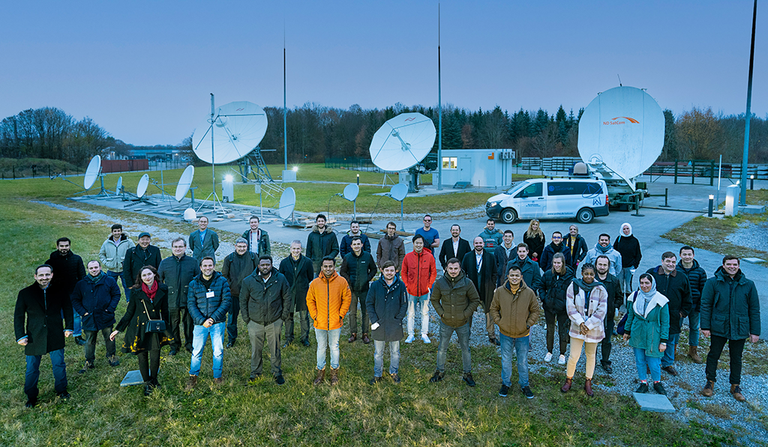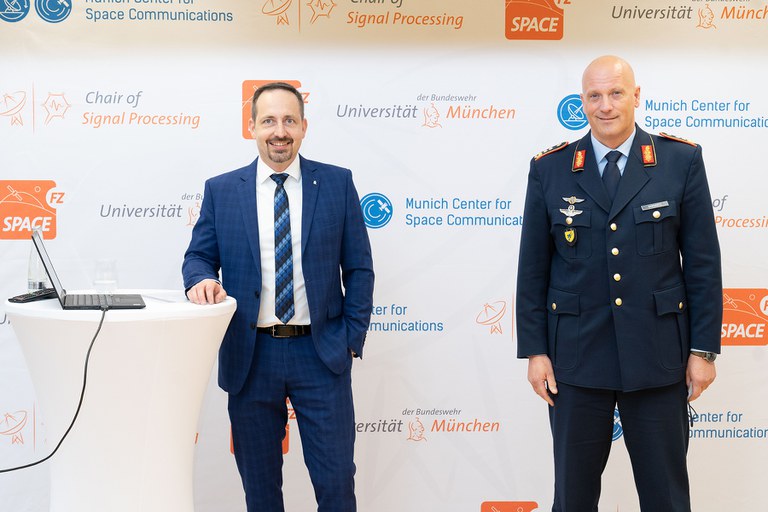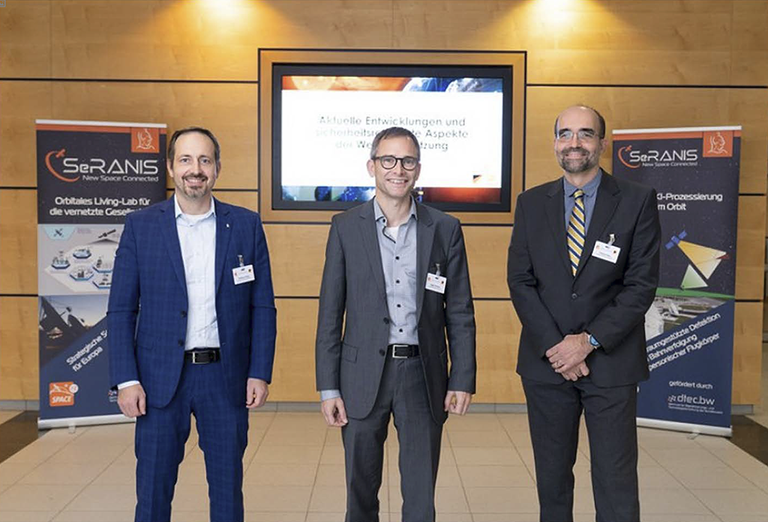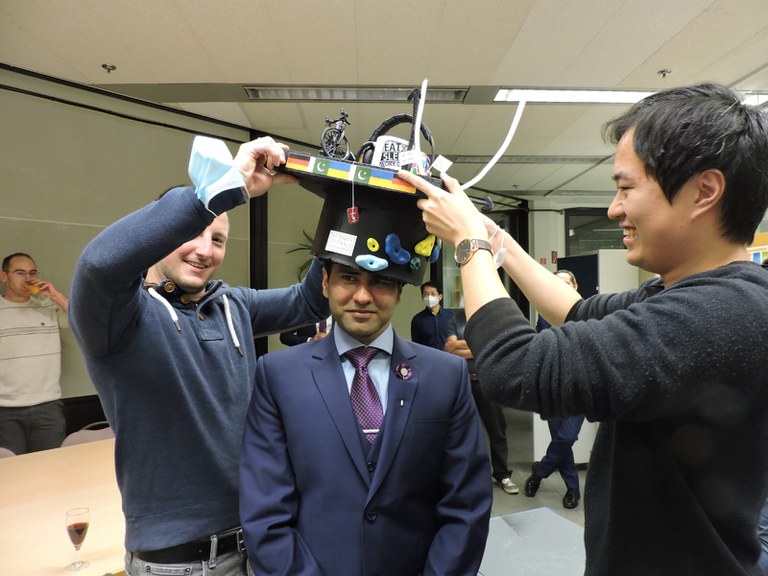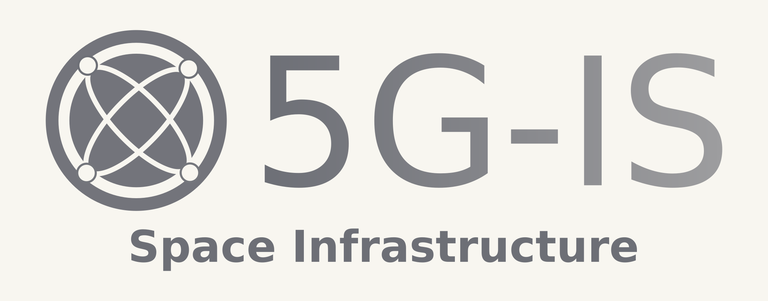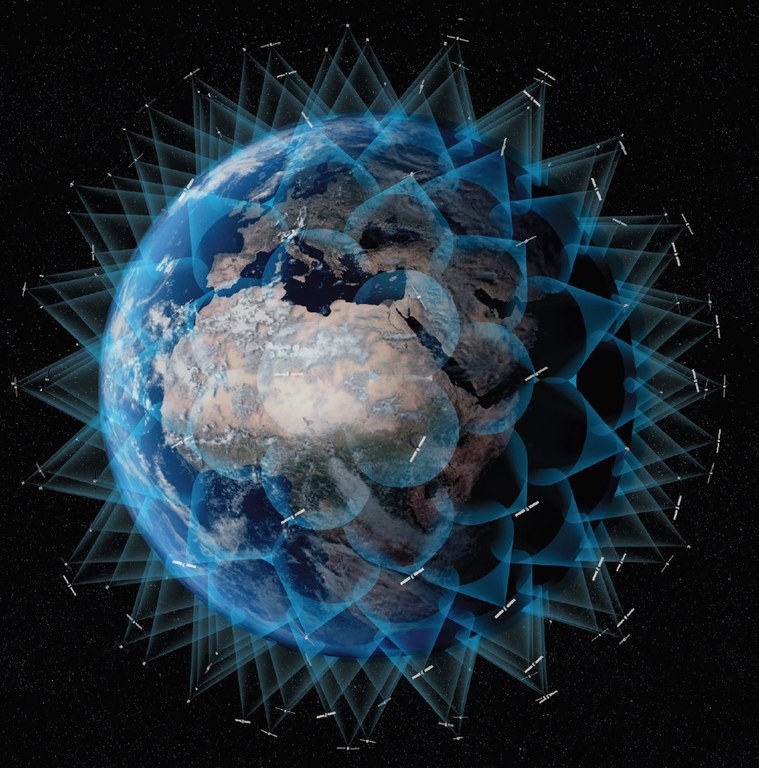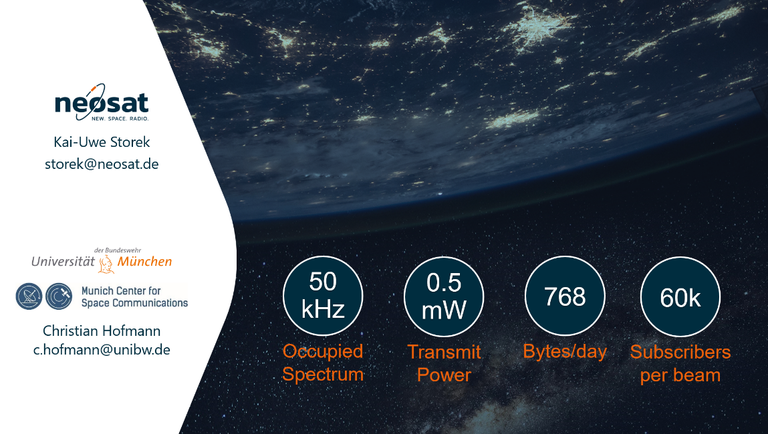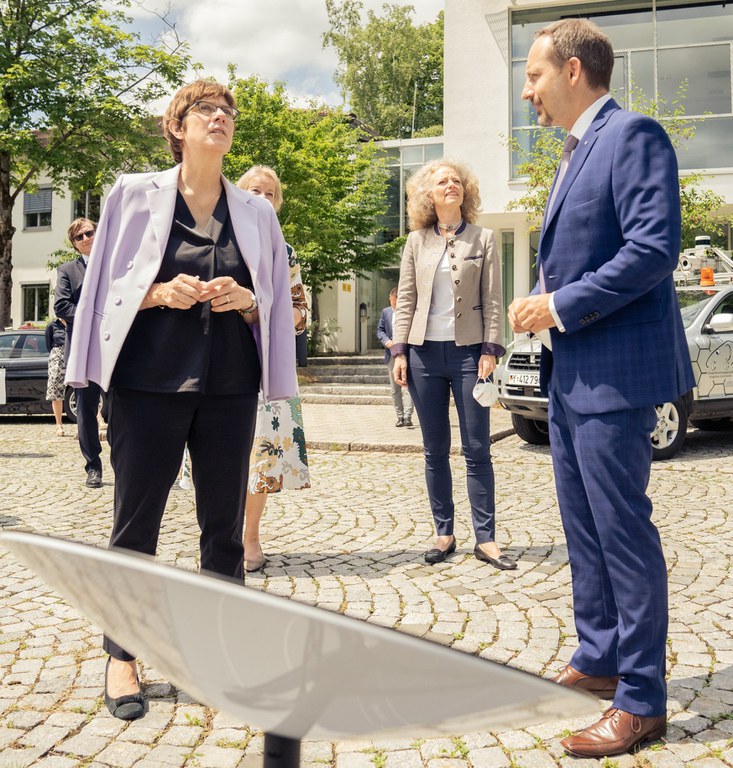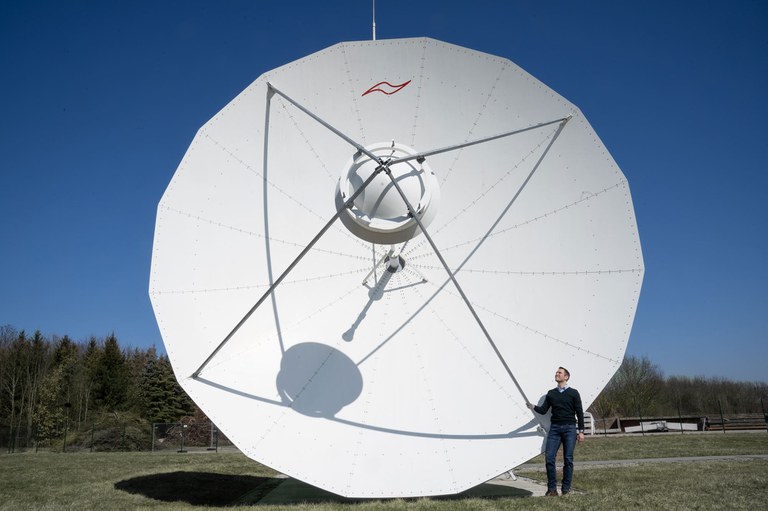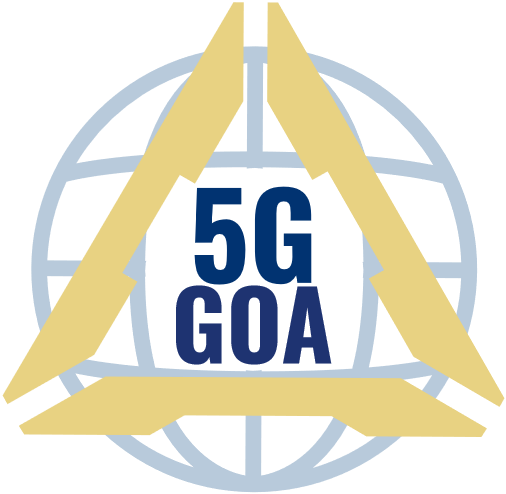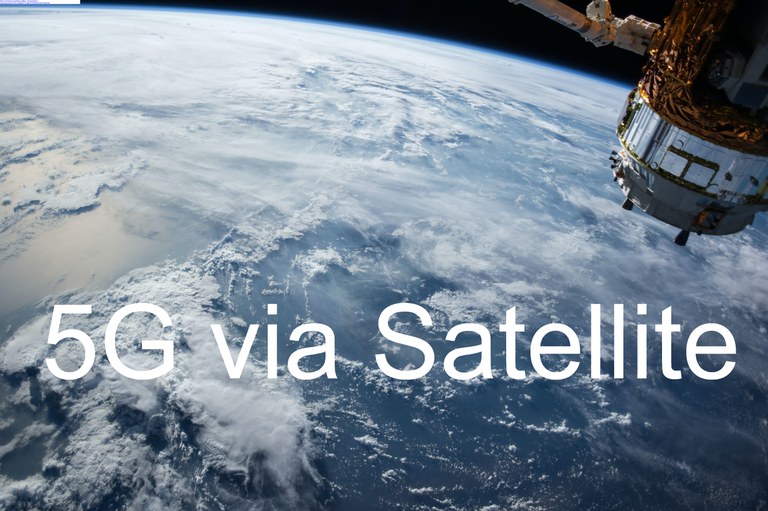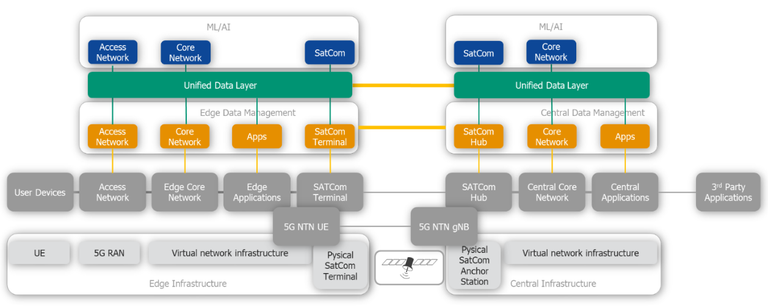| newer News / older News |
Best Publication Award 2021 December 21, 2021: The Institute for Information Technology awarded the “Best Publication 2021 Award” to the authors of the paper entitled “Emergency 5G Communication on-the-Move: Concept and field trial of a mobile satellite backhaul for public protection and disaster relief”. The paper was written by Florian Völk, Robert Schwarz, Mario Lorenz, and Andreas Knopp and has been published in the International Journal of Satellite Communications and Networking. The paper is part of the Special Issue 2021: “Satellite Networks Integration with 5G”. In their publication the authors report the results of an over-the-air test campaign intended to prove the feasibility of mobile 5G satellite backhauls for government agencies and emergency responders. The authors propose and investigate architectures for mobile Public Protection and Disaster Relief (PPDR) networks with satellite backhaul to ensure Communication on-the-Move. The results show that already existing interfaces of the 3GPP standard allow satellite-based 5G networks tailored to the needs of government authorities.
|
Organisation of the SatNEx School 2021 November 2021: The Chair of Signal Processing has hosted from November 23 to November 25 the SatNEx seasonal school: Reinventing Satellite Communication Networks beyond the Digital Era. With lectures given by internationally renowned experts, this event has been the occasion for the participants to strengthen their scientific expertise in the design of future satellite systems. Key topics for next-generation space networks have been covered including for example the integration into 5G & Beyond infrastructures, the development of IoT-based applications or the importance of secure communication links.
A visit of the Munich Center for Space Communications and the exhibition of hardware experiments run by the PhD students from the Chair of Signal Processing have also fostered fruitful discussions between the attendees during the breaks. More generally, the SatNEx School has enabled the participating engineers and researchers from the international satellite community to meet personally and exchange about their respective research and development topics. The event has been organized under the flagship of the Satellite Network of Experts (SatNEx), a European Space Agency initiative aiming among others at supporting collaboration between European research institutes on innovative R&D activities. |
Air Force Inspector Visits UniBw M November 2021: German Air Force Lieutenant General Ingo Gerhartz visited the Bundeswehr University Munich to learn about the SeRANIS satellite project, which is funded by the dtec.bw.
Lieutenant General Ingo Gerhartz got acquainted with the SeRANIS project and the UniBwM’s SPACE Research Centre that is responsible for the project. The SeRANIS project is enabling a pioneering work both for the digitalization of the German society and the Air Force. This project implements an integrated laboratory environment by means of which a cutting-edge research in the fields of the next-generation mobile radio systems (6G), satellite navigation, earth observation and artificial intelligence will be conducted. Lieutenant General Gerhartz also learned about the ‘Hitchhiker's Guide to the Orbit’ start-up challenge associated with the project. As a part of the planned small satellite mission, the SeRANIS x founders challenge offers a wide range of technological start-ups, founders and entrepreneurial research initiatives a chance to test their technologies in space. Moreover, Lieutenant General Gerhartz will chair the expert jury of the challenge, who will ultimately determine the best technology candidates. To access the full article at unibw.de here (only in German) To access the SeRANIS Project webpage at dtecbw.de here (only in German) |
Third National Symposium on Space Saftey Hosted at UniBw M November 12, 2021: The 3rd National Symposium on Space Safty was held in November at the Universität der Bundeswehr München in compliance with current coronavirus policies. The topic of the event was current developments and saftey-relevant aspects of space utilization.
Participants came from the Bundeswehr, ministries, authorities, industry and research and spent three days exchanging views on security mechanisms to be established on a nationwide or supranational basis and discussing, among other things, technically oriented topics for the future. The main topics were security mechanisms, space traffic management, space as resource: economic and operational space, as well as "new space" and current research priorities. In addition to the discussion panels, current research topics of RC SPACE were also presented, such as the SeRANIS project funded by dtec.bw, whose goal is to launch its own satellite, on which a total of twelve experiments will be placed, into space in 2025. The event was organized by the SPACE Reseach Center and the Bundeswehr Educational Center. |
|
Ovais Bin Usman defended successfully his Ph.D. Thesis On 27 October 2021, Ovais Bin Usman, a wimi at chair of signal processing (EIT 3.2) successfully defended his Ph.D. thesis. The thesis was titled “Digital Predistortion for High Throughput Satellites: Architectures, Applications, and Performance”. The thesis studied the digital linearization (predistortion) of high power amplifiers (HPAs) in high throughput satellites (HTS). More importantly, the thesis provided an insight into which parameters and trade-offs are the most beneficial in terms of predistortion. As a result, the thesis serves as a basis for further research in optimizing on-board DPD and its related applications. The Ph.D. defense committee was headed by the committee chair Prof. Dr. Christian Hofmann in the presence of the two examiners, i.e., Prof. Dr. Andreas Knopp and Prof. Dr. Josef A Nossek. Ovais started his research at the institute in 2016 after completing his masters in communication engineering at technical university of Munich (TUM). Currently, he is employed at Nokia-Ulm (Germany) as a 5G RF Synchronization architect.
|
|
ESA 5G Space Based Infrastructure Study Kick-off October, 2021: Space based network infrastructure will very soon complement the terrestrial mobile networks that are being currently deployed based on 5G technologies standardised by 3GPP. This will allow satellite communications to become an integral part of the global telecommunications ecosystem with the potential to grow existing market segments such as backhauling and to expand into new ones such as hybrid networks, IoT via satellite and mobility applications.
Recently, Universität der Bundeswehr München and its partners Airbus Defence & Space GmbH, Fraunhofer IIS, Fraunhofer FOKUS, and Eurescom GmbH, kicked-off a project to study the delivery of standards based 5G and beyond 5G communication services over a space-based infrastructure. The study, which is funded by the European Space Agency (ESA), will propose a comprehensive technical and programmatic vision of how a 5G and beyond 5G space-based infrastructure can provision services for consumers and various industries meeting 5G key performance indicators in terms of performance, reliability, resilience and security. The consortium undertakes the challenging task to propose a non-terrestrial network (NTN) infrastructure and its deployment scenarios to deliver advanced communication services in a timely and cost-efficient manner. In addition, it will focus on the preparation of a future Satcom technology roadmap in line with the emerging 6G concepts in order for NTN to play an even greater role in offering global connectivity.
The study is planned to complete in mid-2022 and will produce a position paper that will describe the main findings of the study, with the particular focus on proposing concepts for the 5G space-based infrastructure and recommendations for technology and demonstration roadmaps as well as associated deployment and procurement models. More information here: https://www.airbus.com/newsroom/news/en/2021/10/5G-from-Space-Airbus-and-partners-to-study-standards.html |
|
Independent Trend Analysis on Megaconstellations (HEUMEGA) has been published Until now, satellites were mainly expensive custom-made products - in mega-constellations (with several 10,000 satellites), satellites become much smaller and less expensive.
So called Megaconstellations raise several questions at once: have the technical challenges been mastered? Are the Megaconstellations just a gimmick for the super-rich, or will they have a longer market presence? Are the business models viable and how do they differ from the geostationary satellites that have been used for years for communications services? What does this mean for Germany as a user and also for the German space industry? These are the questions that the Independent Trend Analysis on Megaconstellations, HEUMEGA, has been investigating. To this end, the STARLINK, OneWeb, Amazon Kuiper, Telesat Lightspeed, AST&Science SpaceMobile and KLEO Connect systems operating in LEO as well as the SES Satellites`s O3B mPower system operating in medium earth orbit (MEO) were examined. The HEUMEGA analysis was carried out with funding from the German Federal Ministry for Economic Affairs and Energy (BMWi) by the Munich Center for Space Communications of the Bundeswehr University Munich on behalf of the German Space Agency at German Aerospace Center (DLR). More information in German language. https://www.dlr.de/rd/de/desktopdefault.aspx/tabid-18004/28579_read-74147/ The full report can be ordered here: https://www.dlr.de/rd/de/desktopdefault.aspx/tabid-2109/mailcontact-43486/ |
DLR and UniBw M: Cooperation in partnership July 21, 2021: Today the UniBwM president, Prof. Merith Niehuss, and the German Aerospace Center (DLR) CEO, Prof. Anke Kaysser-Pyzalla, signed a cooperation agreement at the university. The purpose of the agreement deals with the future development of critical space infrastructures. Prof. Kaysser-Pyzalla explains that "the agreement creates a framework to further foster the successful cooperation, which has been going on for years, between the DLR and the UniBwM. In other words, this means working on shared projects, establishing jointly appointed professorships and advancing future topics together". She continues: "We will now expand all these areas of cooperation even further in the near future and especially in the field of security research."
https://www.unibw.de/home/news/dlr-und-unibw-m-partnerschaftliche-zusammenarbeit |
|
IoT via GEO Satellite Test Results July 6, 2021: "The number of attendees from Europe and around the world exceeded our expectations," said Christian Hofmann after presenting our latest test results during a TechTalk hosted by the European Space Agency - ESA. The interested audience listened to the perspective of using geostationary satellites in the Internet-of-Things (IoT) as relays for very small devices without terrestrial connection. This so called “direct access” for e.g. trackers, sensors or other miniaturized transceivers enables novel applications and business models in remote locations.
The TechTalk was given by our team member Christian Hofmann and Kai-Uwe Storek, the managing director of NEOSAT GmbH. The focus was on our IoT solution called UCSS, which enables efficient communication for a very large number of devices via satellite and has been developed at the Munich Center for Space Communications and NEOSAT. The presented results featured tests using UCSS with four different GEO satellites at different frequency bands between 1.5 and 14.5 GHz and demonstrated the superior performance of our waveform with respect to power efficiency and robustness. |
|
Project SeRANIS: Visit of Minister Kramp-Karrenbauer June 24, 2021: Federal Defense Minister Annegret Kramp-Karrenbauer came to Bundeswehr University Munich once again three months before the Bundestag elections to promote 662 students to officer. The Minister of Defense also took advantage of her visit to the Bundeswehr University Munich to inform herself about current and strategic research projects, for example in the fields of satellite communications and aerospace technology. Professor Andreas Knopp informed Annegret Kramp-Karrenbauer about the SeRANIS research project. The research project SeRANIS is part of the newly established Digitalization and Technology Research Center of the Bundeswehr (dtec.bw). The mission "Seamless Radio Access Networks for Internet of Space", or SeRANIS for short, bears the central research objective in its name: The project deals intensively with the problem of communication between different networks such as mobile radio and satellite constellations.
*dtec.bw – Digitalization and Technology Research Center of the Bundeswehr – is a scientific center jointly supported by both universities of the Bundeswehr and part of the German government's economic stimulus program to overcome the COVID-19 crisis. With its inclusion in the German Recovery and Resilience Plan (GRRP), dtec.bw is funded by the European Union – NextGenerationEU. |
|
Satellites in the 6G era – The German Engineering Society (VDE) meets Dr. Thomas Delamotte June, 2021: Dr. Thomas Delamotte has presented his vision for the future of satellite communication systems in an expert talk with Dr. Berthold Panzner, head of the VDE study group on information engineering. The fundamental transformation of the satellite communication industry and the identified key enabling technologies are discussed in this interview. 6G enabled satellite systems will be an integral part of future networks to guarantee connectivity anytime, anywhere, be it for broadband connectivity in planes, the Internet of Things or many other promising use cases. Research efforts needed to achieve this ambitious goal are already on-going.
Read the full interview (in German) of Dr. Delamotte here |
|
Did you know that… April, 2021: the UniBw M has one of the largest and most versatile research facilities in Germany for testing satellite and space communication devices and technologies? The Munich Center for Space Communications is part of the Chair of signal processing of Prof. Andreas Knopp. Research group leader Dr. Robert Schwarz showed us his unusual workplace at the satellite ground station. He heads the facility, which is fully accessible to both the Bundeswehr and public research. Various antennas can be used to communicate with geostationary satellites in space, but the actual research at the institute is not about large devices, but about converting and processing the received signals.
You can find more information about the test facility and the institute here: https://www.unibw.de/satcom/spacecom 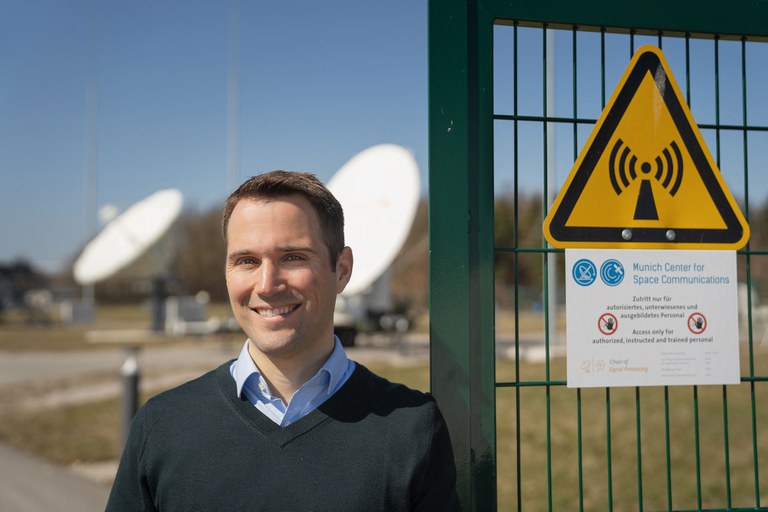 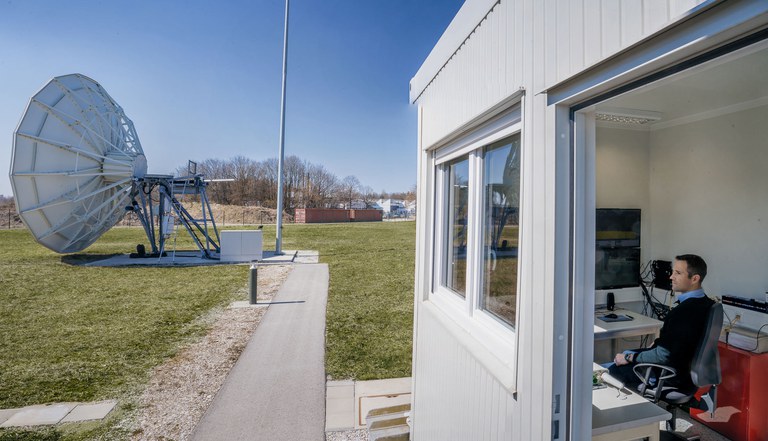 |
|
ESA 5G-GOA Project Kick-off March, 2021: We have recently started a new project funded by the European Space Agency - ESA: 5G enabled ground segment technologies over the air demonstrator (5G-GOA).
5G-GOA develops and implements the necessary modifications in the 5G New Radio standard to enable the direct radio access of terrestrial communication networks via satellite, a 5G RAN via satellite closely following the 3GPP Work Item on Non-Terrestrial-Networks. Our solution is directly based on 3GPP discussions and results and covers physical layer techniques (e.g. synchronisation) up to specific protocols and upper layer implementations (e.g., timers and random access procedure) of the radio access network, as needed. 5G-GOA focuses on geostationary satellite systems. 5G-GOA produces a hardware and software prototype, consisting of at least two user terminals and a gNodeB base station. In summary, 5G-GOA develops and delivers a gNodeB (gNB) based gateway and the User Equipment (UE) compliant with the 5G New Radio standard release 17 or later for demonstrating the direct radio access connectivity in Non-Terrestrial Networks (NTN). Website:https://artes.esa.int/projects/5ggoa |
|
First software-defined 5G New Radio demonstration over GEO satellite March, 2021: Satellite-enabled 5G services have the potential to provide worldwide connectivity. For the first time now, selected extensions of 5G New Radio (NR) to support non-terrestrial networks (NTN) have been successfully demonstrated over a geostationary (GEO) satellite. The Munich Center for Space Communications of the Bundeswehr University Munich carried out the bidirectional over-the-air tests based on the Fraunhofer Institute for Integrated Circuits IIS’s extended 5G New Radio protocol stack for satellite.
When transmitted via GEO satellites, radio signals have to bridge great distances. This leads to delays, so that an enhanced 5G air interface is required. These challenges are addressed in the current work program for Release 17 of 5G NR within the 3rd Generation Partnership Project (3GPP) standardization by specifying new features supporting non-terrestrial networks in 5G. In order to provide an early proof of concept, Fraunhofer IIS and the Munich Center for Space Communications (Bundeswehr University Munich) recently tested some of the planned extensions for 5G NR via GEO satellite. The over-the-air demonstration was conducted within the 5G METEORS program, an ARTES MakerSpace for 5G and satellite communication funded by the European Space Agency (ESA). Bidirectional transmission over GEO satellite During the over-the-air tests, the user equipment (UE) performed the initial connection setup to the 5G base station (gNB) by using a specifically adapted random access procedure for 5G over satellite. After the successful setup of the connection, the 5G uplink and downlink transmission signals were decoded with two different modulation schemes, namely QPSK and 16-QAM. Furthermore, a 5G timing advance procedure, which worked smoothly, was tested to keep the UE synchronized to the gNB. The transmissions utilized a bandwidth of 10 MHz in uplink and downlink. Both the UE and the gNB were located on ground. The round-trip time of the system from gNB to UE and back was measured between 530 and 570 milliseconds. Software defined 5G New Radio The 5G base station as well as the 5G user equipment used in the experiments are fully software-defined solutions. Both components are based on OpenAirInterface (OAI), an open-source implementation of the 5G New Radio protocol stack, which runs on general purpose platforms. Fraunhofer IIS contributed to OAI with selected features of the 5G NR waveform and the adaptations for satellite communication. Important 5G protocol stack implementations for this successful test were funded as part of the European Union Horizon 2020 EU-Korea project 5G-ALLSTAR. |
|
Satellite Mega Constellations February, 2021: „Satellite Mega Constellations are the pivotal concept of the “New Space Economy”. They consist of hundreds or thousands of small satellites in a low earth orbit, which is comparable to the orbit of the International Space Station (ISS). The satellites form an information network to deliver new services to end users on the ground including also airborne applications like in-flight entertainment. The by far most important service category of such networks is telecommunications, in particular the delivery of broadband internet services and the connection of sensors and actors in the Internet-of-Things (IoT). In this way, mega constellations are among the key elements of the next generation of telecommunication networks, which is frequently called “6G”. Space borne telecommunication networks are based on an unprecedented variety of technological innovations including radio equipment and signal processing as well as new manufacturing strategies and operational concepts. Moreover, data handling and resource management requires unmatched amounts of automation that is achieved via novel concepts of artificial intelligence. As a consequence, the needed funds to invest into mega constellations are significant and their economic success has not been proven yet. Nonetheless, such constellations offer manifold opportunities for the space industry along the entire value chain, and also end users might benefit from new services such as broadband internet in remote locations or remote autonomous driving. Therefore, on behalf of the German Ministry of Economic Affairs and Energy (BMWi), the Space Administration of the German Aerospace Center (DLR RfM) has awarded a contract to our team to investigate the trends and challenges as well as the opportunities and financial viability of satellite mega constellations for Germany.”
|
|
ESA DAWN Project Kick-off January, 2021: At the dawn of the new year Chair of Signal Processing of the Bundeswehr University Munich has joined a new project within the ESA ARTES 4.0 Programme:
Data-driven network controller and orchestrator for real-time network management (DAWN). The DAWN project investigates network control, management and orchestration algorithms to enable data-driven SatCom network and resources management and configuration in future integrated satellite-terrestrial networks. This includes data mining and analysis to optimize the performance of both the radio access and the network. The DAWN project develops and implements techniques and algorithms that allow automated network control and management based on network-generated information – data-driven networking, user’s data, context-awareness, and measured and predicted performance of the network. In addition to validating the performance of the algorithms through simulation, DAWN also validates the proposed data driven techniques in the integrated 5G satellite-terrestrial test bed of SATis5. |
|
Munich Aerospace Research Group January, 2021: A new Munich Aerospace research group has been accredited to the Chair of Signal Processing. In cooperation with the DLR Institute of Communications and Navigation (DLR-IKN), this group, entitled „Machine Learning for Network Management and Resource Allocation in Future Satellite Systems“, will focus its research activities on the design of innovative approaches for the operation of complex self-organizing networks. Multi-layered satellite systems will indeed play a major role to guarantee a global connectivity in 5G & Beyond. With flexible digital payloads in different orbits (e.g. LEO, GEO), a high-level of interoperability and reconfigurability will be offered to adapt to varying traffic demands. In this context, machine learning techniques are expected to foster technological breakthroughs.
With this research group, whose scientific and technical management will be taken over by Dr. Thomas Delamotte, Munich Aerospace strengthen the regional expertise on the potential of machine learning solutions in the key area of Aerospace Communications and Navigation. The activities will also allow to address key aspects of the digital transformation of society. To support these efforts, Munich Aerospace will award a PhD scholarship to a talented student who will conduct his research at the Chair of Signal Processing. |
| newer News / older News |
News 2021


